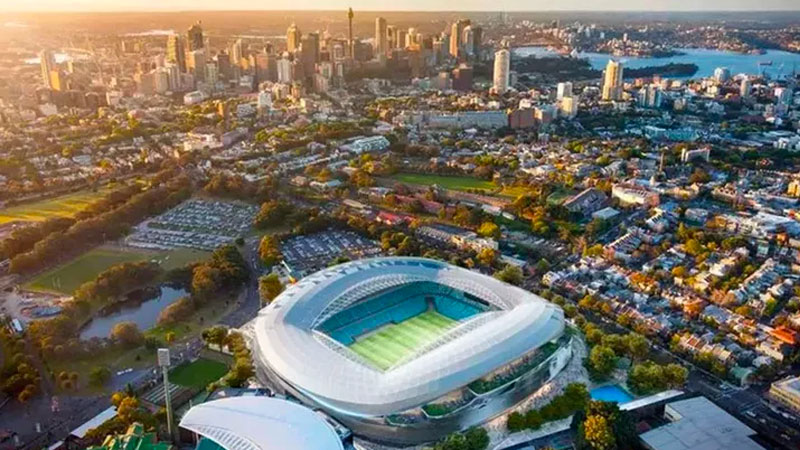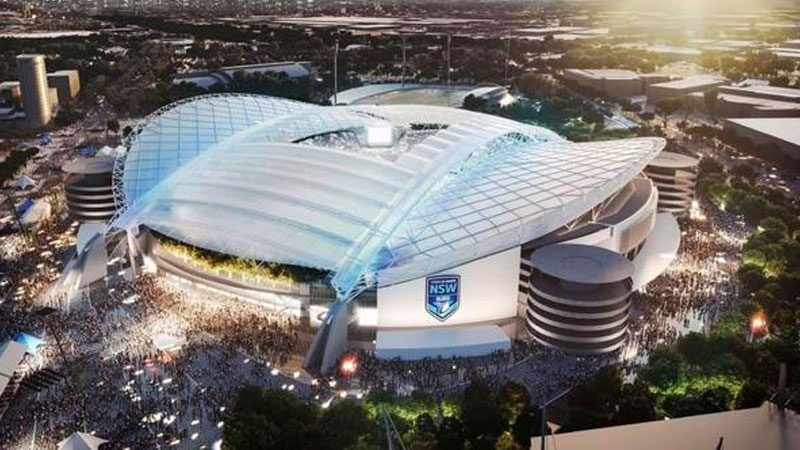Construction Back on Track at Sydney Football Stadium
Construction is finally under way at the $729 million development of Sydney Football Stadium at Moore Park, with the first slab of concrete poured.
The NSW government’s original plan was to ensure the stadium was ready by July 2022, which has now been revised to September, ahead of the NRL grand final which is normally held during the first week in October.
The project, being overseen by construction giant John Holland, will see 40,000 cubic metre of concrete poured in coming weeks—the equivalent of 16 Olympic swimming pools.
The Sydney Football Stadium, also known as Allianz Stadium, will have state-of-the-art technology and a rectangular field, putting football fans close to the action while lifting its capacity to 42,500 spectators.

“The pandemic would not hinder the schedule, despite staggering shift times and maintaining social distancing while on site,” acting minister for sport Geoff Lee said.
“Covid hasn’t slowed it down. It’s on track at the moment. This is about jobs, jobs and more jobs.
“We’ve always made the commitment that it will be ready for the 2022 NRL grand final [and] it’s absolutely on track, according to our schedule.”
The decision to knock down and rebuild the Sydney Football Stadium at a cost of $729 million has been a long-running source of controversy for the Berejiklian government.
Lendlease was slated to rebuild the venue after completing the first-stage demolition of the stadium.
Infrastructure NSW inked the initial contract with Lendlease in 2017.
The project drew widespread criticism for the costs required to rebuild the stadium. Lendlease’s offer for stage two didn’t meet Infrastructure NSW’s $729 million budget for the rebuild.
The total estimated cost for the project is now $828 million once demolition and contingency costs are factored in—$99 million more than the government’s election commitment.
But even with the increased price tag, the new stadium will not include an LED “curtain”, which would enable the top tier of the stadium to be closed off during events that attract smaller crowds.
The stadium’s key tenants—Sydney FC, the Sydney Roosters and the NSW Waratahs—remain steadfast that the technological feature was a top priority for them.

Questions remain over ANZ Stadium redevelopment
In June, the NSW government said it would scrap the $800 million redevelopment of ANZ Stadium in western Sydney so it could use the money to kick-start smaller, “shovel-ready” projects.
The decision was taken as the impact of hundreds of thousands of job losses from the Covid-19 pandemic continues to hit the economy with the NSW government bracing for as much as $20 billion to be wiped from state coffers during the next four years.
The funds initially allocated to the ANZ Stadium redevelopment—to turn the venue into a rectangular facility—will now be diverted to a $3 billion acceleration fund.
The Western Sydney Business Chamber questioned the reasoning behind the the pause on the Olympic Park stadium revamp, arguing it would have led to rapid job creation.
“The reason we’re doing this is to make sure we have the best possible experience for people attending, that we can keep attracting great content, that Sydney can continue to compete in a tourism sense,” Western Sydney Business Chamber’s executive director, David Borger said.
“It was one of the few projects that’s absolutely ready for a shovel in the ground. It would have created lots of jobs very quickly.”















